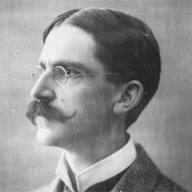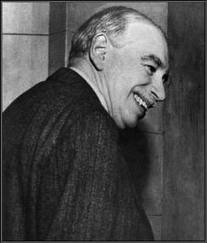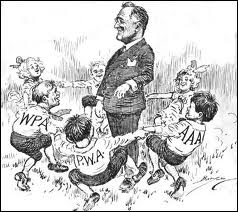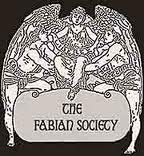 Are any of you familiar with the movie “Fallen?” The film begins with a cop, played by Denzel Washington, paying visit to a serial killer prior to his–the killer’s–execution. During the scene, the killer takes Denzel by the hand and sings “Time Is On My Side.” Moments later, the killer is executed and the plot thickens. Although his body is toast, the spirit remains floating from one body to the next, first to a person working at the prison, then on to a construction worker, and so on and so forth. Unsuspecting citizens play host to an infiltrating demon spirit’s agenda, recommencing with more killings at the behest of the soul which has taken them over.
Are any of you familiar with the movie “Fallen?” The film begins with a cop, played by Denzel Washington, paying visit to a serial killer prior to his–the killer’s–execution. During the scene, the killer takes Denzel by the hand and sings “Time Is On My Side.” Moments later, the killer is executed and the plot thickens. Although his body is toast, the spirit remains floating from one body to the next, first to a person working at the prison, then on to a construction worker, and so on and so forth. Unsuspecting citizens play host to an infiltrating demon spirit’s agenda, recommencing with more killings at the behest of the soul which has taken them over.
At first, Denzel suspects there are copycat killings taking place; however, as these killings are being committed by one-time, normal, everyday productive members of society, he realizes that something else is going on. He realizes that these people were not acting on their own accord; rather, they served as puppets for a homicidal and incorporeal puppeteer…who would move on to the next body by a touch of the hand, a bump, a graze, a brush-by; a brief instant of contact allows for the spirit to switch bodies…and walk away from the scene undetected. This brings Denzel into the occult world, as he looks for alternate ways to put an end to this, but the situation seems hopeless, even when the killer sits at his desk and taunts him. Take a look at this scene, and you’ll understand what I mean…
http://www.youtube.com/watch?v=563xkXq4duw
I couldn’t prevent myself from thinking of this movie when looking into the spread of Fabian Socialism. Ideas, like the soul, are undetectable to the human eye. They can be transmitted from person to person via this thing called “communication.” They can change the way we view the world; sometimes for the better, and sometimes for the worse. But, unlike the boundaries existent in the film “Fallen,” ideas aren’t restricted to just one body at a time. They multiply from one body to two to four to eight and so on. They have the capacity to burgeon from couples to groups to throngs to masses to nations.
And as an idea becomes mainstream, the less likely its adherents even know where the idea came from or what its overall aim is. After all, ideas are ideas; they are invisible. They don’t come gift-wrapped, they don’t come with a little red ribbon, they don’t come with their own theme song. There is no announcer nearby with a megaphone doing play-by-play commentary. There is no “caution” sign. A “communication” takes place between individuals and, when the conversation is over, they carry on with their day, forever affected by the new ideas that have just become a part of them…sometimes for the better, and sometimes for the worse.
A stealthy thing, these ideas are…
A society known as “The Fellowship of the New Life” eventually led to the creation of a spin-off society in 1884. And, from this spin-off creation came a treatise (Why are the Many Poor?) which laid forth arguments that the only long-term remedy was to restrict the power and wealth of the successful; to dismantle the present structures of social privilege; and, in the aftermath of the dissolution, build social institutions based on “fair” allocation of wealth and continued emphasis on social equality. The small group tossed around ideas as to how they would go about bringing such drastic changes; after all, history showed that overt revolutions were always met head-on by an opposition. They needed a plan of stealth, something undetectable to the casual, everyday observer, something which operated on “gradual” change vice belligerent and brazen calls for institutional changes.
Sound familiar?
Frank Podmore, an English author who focused the preponderance of his skills studying the psychic realm, gave honorable mention to an ancient Roman General and politician named Fabius Maximus. Maximus was nicknamed the “Cuncator” which translates to the “Delayer” because of his approach to overwhelm the enemy through the use of stealthy harassment and attrition, instead of head-on battles.
The small group of people surrounding Podmore liked the idea, and applied an explanatory note on their first ever pamphlet produced as an “organized” society: “For the right moment you must wait, as Fabius did most patiently, when warring against Hannibal, though many censured his delays; but when the time comes you must strike hard, as Fabius did, or your waiting will be in vain, and fruitless.”
From its very inception the use of stealth and deception was laid down as a fundamental procedure of the Fabian Society. The Society adopted the name “Fabian” as a symbol of a plan “formulated to penetrate civic and social units and to find means to disseminate contemporary social ideas, concentrating on concrete objectives rather than on doctrines.” The Fabians did not constitute themselves as a political party as such but developed the technique of “socialistic ‘permeation’ of existing political institutions.”
The prominent figures began rolling in: H.G. Wells, Annie Besant, Graham Wallas, Emmeline Pankhurst, Virginia Woolf, Edith Nesbit, Sydney Olivier, etc…And, at the center of it all were Sidney Webb, Beatrice Webb, and George Bernard Shaw–the essays and studies these three produced have been un-matched by subsequent Fabians regarding the “gist” of the group and its aims.
 Shaw contrasted the difference between his group and “other” radical groups by alluding to the appearance of respectability. From one of his essays: “The Fabian Society got rid of its Anarchists and Borrovians, and presented Socialism in the form of a series of parliamentary measures, thus making it possible for an ordinary respectable citizen to succumb to a religious lawlessness, exactly as he might profess himself a Conservative and belong to an ordinary constitutional club.”
Shaw contrasted the difference between his group and “other” radical groups by alluding to the appearance of respectability. From one of his essays: “The Fabian Society got rid of its Anarchists and Borrovians, and presented Socialism in the form of a series of parliamentary measures, thus making it possible for an ordinary respectable citizen to succumb to a religious lawlessness, exactly as he might profess himself a Conservative and belong to an ordinary constitutional club.”
Again, and I repeat, the aim was to use undetectable methods of stealth in reforming their surroundings into something Utopian–it was a cunning alternative to the Marxist Social-Democratic Federation of the day, which was out there and in everyone’s face, leaving it vulnerable to disapprobation. The Fabian plan was to avail themselves of the voting booths and representative democracy as their instruments of change. They‘d infiltrate the institutions and devour them from the inside out. They‘d take on positions in learning institutions. They‘d take on positions in the court system. They‘d take on positions within the government. They‘d preach the Fabian gospel to vulnerable students who hadn‘t the worldly-wisdom to know what was being thrust upon them. They‘d change the outcomes of court-cases through the use of legal re-interpretations and semantic legerdemain, ruled to a desired outcome by Fabian Judges. They’d become politicians, and exact the indiscernible changes from their office’s capacity…planting the poisonous seeds of change.
From the onset, the skillful ruse of feigning “respectability,” while simultaneously subverting society for revolutionary purposes had phenomenal success. It gave the Fabians an easy entry into government, banks, stock exchanges and universities. The policy of conscious deception allowed them to have their cake and eat it too. While extremists with franker policies were barred from ordinary social intercourse, the Fabians were welcomed because they were elegant and genial, they were amiable intellectuals who possessed that velvet glove approach.
And people moved along…moved along…because there was nothing to see.
Sound familiar?
British Fabian leaders Sidney Webb and Edward R. Pease came to the United States in 1888 in order to train Fabian groups in the art of socialism. Yes, Fabianism found a following here at home that quickly. Webb was welcomed with open arms by the American Economic Association, where it was thus made possible for his essay, “Socialism in England,“ to be circulated to Universities throughout the United States.
Among those who pioneered Fabianism in America: James Harvey Robinson, Oswald Garrison Villard, W.E.B. DuBois, and Harry Frederick Ward; all of them from Harvard University. Many at Harvard allowed the Fabians to operate freely with the best of intentions. That cloak of “respectability” permitted them to operate under harmless colors. They weren’t considered as conspirators, rather as individuals with whom one could engage in friendly disagreements
In 1895, the London School of Economics was founded by the Fabian Society. The decision to create this school came about during a breakfast party at Borough Farm. Sidney Webb, Beatrice Webb, Graham Wallas and George Bernard Shaw were there. And the founding was made possible after a bequest courtesy of Henry Hunt Hutchinson–a wealthy solicitor from Derby. As Sidney Webb pointed out, the intention of the institution was to “teach political economy on more modern and more socialist lines than those on which it had been taught hitherto, and to serve at the same time as a school of higher commercial education”.
Who can we associate with the London School of Economics? Current UK Labor Party Leader, Ed Miliband; the head of the Bank of England, Mervyn King; current patriarch of the Rockefeller family, David Rockefeller; the Hungarian-American business magnate, George Soros…
Infiltration of the trade unions proved to be a successful endeavor, as the Fabian Society teamed up with them in 1900 to form the Labor Party; the alliance remains to this day. From those early days the political ideas espoused in the Labor realm have demonstrated Fabianism: the party’s 1918 Constitution and its program “Labor and the New Social Order” were written predominantly by Sidney Webb, a Fabian Society co-founder.
The Labor Party policies have since been continuously determined by the Fabian Society.
And things continued to flourish for the Fabians here, in the United States. Bela Hubbard, in “Political and Economic Structures” claimed: “By the close of the nineteenth century they (the Fabians) had made converts in the United States. Under Fabian influence and guidance, the Intercollegiate Socialist Society was founded in New York City, in 1905.”
During this same period the Rand School of Social Science was formed by Fabian Socialists and became the New York headquarters of the Intercollegiate Socialist Society (ISS). Chapters of the ISS were also formed at Harvard, Princeton, Columbia, Barnard, and University of Pennsylvania. Active in the I.S.S.: Roger Baldwin, Harry F. Ward, Stuart Chase, Felix Frankfurter, and Walter Lippmann.
Roger Baldwin co-founded the American Civil Liberties Union (ACLU); Harry F. Ward was the ACLU’s first Chairman; Felix Frankfurter also co-founded the ACLU, worked as an assistant under 2 Secretaries of War, worked as a Judge Advocate General, became a loyal advisor to FDR until being appointed to the Supreme Court of the United States; Walter Lippmann was a writer who used his considerable journalistic skills to push the Fabian pill, in addition to advising several US Presidents, including Woodrow Wilson, FDR, and LBJ; Stuart Chase was an author, political activist, and economist who’d later lent considerable support to Lyndon Johnson’s “Great Society” policies.
In 1942, Stuart Chase wrote “The Road We Are Traveling,” in which he outlined the Fabian plan of taking over America. Compare this to what you see around you, please:
1. Strong, centralized government.
2. Powerful Executive at the expense of Congress and the Judicial.
3. Government controlled banking, credit and securities exchange.
4. Government control over employment.
5. Unemployment insurance, old age pensions.
6. Universal medical care, food and housing programs.
7. Access to unlimited government borrowing.
8. A managed monetary system.
9. Government control over foreign trade.
10. Government control over natural energy sources, transportation and agricultural production.
11. Government regulation of labor.
12. Youth camps devoted to health discipline, community service and ideological teaching consistent with those of the authorities.
13. Heavy progressive taxation.
Sound familiar?
Then came the American brand of the London School of Economics: The New School for Social Research. Established in 1918, its purpose was to introduce the budding mass of socialists in Manhattan’s Greenwich Village a grown-up version of “progressive” education, in order to prepare them for “cooperative living.” The principal founders were John Dewey, James Robinson, and Charles A. Beard.
John Dewey is either hailed as the one who orchestrated a better way of educating or the one to blame for our current predicament. I partially lean to the latter, only because I’m of the mind that he served merely as a conduit and agent for enacting socialistic propaganda into our pedagogical methods via machinations and schemes hatched up by many predecessors. I will delve deeper into that in a later article. For now, I offer you this statement made by liberal-socialist educator Sidney Hook: “In Dewey’s philosophy we have a sustained a systematic attempt to take the pattern of scientific inquiry as a model for knowledge and action in all fields…. The life of democracy in our day and age depends upon ‘taking the method of science home into our controlling attitudes and dispositions, employing the new techniques as a means of directing our thoughts and efforts to a planned control of social forces.’”
Planned control of social forces? Directing of our thoughts?
Charles A. Beard, influenced heavily by Auguste Comte’s ‘Religion of Humanity,’ was enamored with John Ruskin’s thesis that the political state should provide free education, vocational training workshops, guaranteed employment, job security, housing and social security for the old and poor, minimum wage laws, rent control, income ceilings, and public ownership of transportation.
Professor Robinson–whom I mentioned earlier as one of the American pioneers of Fabianism at Harvard–was all about Dialectical Materialism, but an even bigger fan of Henri de Saint-Simon, who could very well be considered the founder of socialism. Saint-Simon interpreted history as an inevitable progression from primitive times, through medieval religious ignorance, and into the golden age of “science” that was to be socialism. This helps put into perspective the Columbia University Encyclopedia, which described Robinson as one who “… stressed the ‘new history‘–the social, scientific, and intellectual progress of humanity rather than merely political happenings.”
You see, the Fabian Plan for gradual Socialist Revolution was as definitive as it possibly could be; to laugh it off as another conspiracy theory is simple and recklessly naive.
 Yes, there are people out there who proudly belong to the Fabian Society; however, to look at them and them alone in a quest to put your finger on a “there” will prove fruitless. It has expanded beyond that. This is a swelling contamination of thoughts. This is not a phenomenon which requires that we distinguish a “member” from a “non-member.” There are no secret decoder rings. There isn’t a secret handshake. There are no newsletters going out limning the “agenda” as it is meant to be implemented in the name of Fabius Maximus the Cuncator. There are no gatherings of individuals in crowded rooms, where Morse code is transmitted through dancing eyebrows as if to communicate, “we are in on it and these fools haven’t a clue.” This is an inchoate and stealthy corruption of how many of us view the world. This is a transmitting of ideas which has affected many, many unsuspecting individuals. It is a method which has expanded beyond it’s tangible borders. Its a virus.
Yes, there are people out there who proudly belong to the Fabian Society; however, to look at them and them alone in a quest to put your finger on a “there” will prove fruitless. It has expanded beyond that. This is a swelling contamination of thoughts. This is not a phenomenon which requires that we distinguish a “member” from a “non-member.” There are no secret decoder rings. There isn’t a secret handshake. There are no newsletters going out limning the “agenda” as it is meant to be implemented in the name of Fabius Maximus the Cuncator. There are no gatherings of individuals in crowded rooms, where Morse code is transmitted through dancing eyebrows as if to communicate, “we are in on it and these fools haven’t a clue.” This is an inchoate and stealthy corruption of how many of us view the world. This is a transmitting of ideas which has affected many, many unsuspecting individuals. It is a method which has expanded beyond it’s tangible borders. Its a virus.
So, how was the Fabian plan actually sold on unsuspecting politicians and public alike? Instead of professing the desire of a State that was Socialist, they assisted in the creation of a Welfare State. It was done in a gradual and patient manner; advocates preyed upon the weaknesses of human nature to gain popularity. And, unlike the usual Socialist points of view demonstrated by the “once” more mainstream Marxist Social-Democratic Federation in Britain, the Fabians didn’t and still don’t press for complete State ownership of businesses, industry, agriculture or land…as such overt demands would set off too many alarms. They simply seek to insert the State into very specific areas of importance, such as electric power production, transportation, precious metals and of course, credit. Even then, the remaining balance of economic systems would be highly regulated by the State and operated according to the wishes of the State.
It is all about the State!
Take a look at Britain! Notice how the goals have been accomplished with relative ease?
And notice how the Americans have been a little more difficult; nevertheless, the goals are the same and enormous advances have been made. This is where the semantic legerdemain plays a role. Much of these accomplishments have been realized without using that dreaded word: Socialism. But do you see a Welfare State? The Fabian function has been brought to America through a system of stealth and delay that has been openly accepted by the voters of this country without a hint of suspicion on their part.
Bear in mind, this is a stream of thought wholeheartedly devout to Statism. Listen to the ramblings of our politicians; do they sound Constitutional to you? Listen to the ramblings of mainstream economists; do they sound like they even have a clue? Listen to the ramblings of self-proclaimed intellects (graduate students, college professors, media analysts, et al..); where is the American way?
Statism!
This, of course, would be in the best interest of society–an organism where individuals function as mitochondrial DNA or electrons or, more precisely, neutrons. And, the message is constantly conveyed in terms of “social justice,” since it has proven to be the most effective way to peddle excrement as a cleaning agent to the people. Programs of social reform, incremental at first, allows for the tempering of the people; allows for them to grow accustomed to the intervention of the State in the affairs of the individual. And these reforms are never an end unto themselves, are they? Have you not noticed that they merely function as stepping-stones to a greater Utopian construct of society.
Max Beer was an Austrian-German Marxist historian, and he had this to say: “There was no reason for Socialists to wait for revolution. The realization of socialism had begun the moment when the State became accessible to social reform ideas.”
Yes, indeed. Regardless of which “socialist” circle you investigate, you’ll invariably find that the first step in any of their plans is to neutralize capitalism; once that is done, the rest comes relatively easy. So, how is that done? First, I offer you two words: Central Banking. Control the money supply via a central bank and fiat monetary system and there you go…Zap! Neutralized.
Federal Reserve, anyone?
Second, gain effective control over major infrastructure and services.
New Deal, anyone?
The New Deal accomplished substantial Fabian feats by weighing down the American landscape with numerous price controls, quotas, subsidies, inspections, regulations, licenses, fees, penalties and massive government interventions into what was formerly private enterprise. Although you would never hear politicians of either political party admit to supporting the ideals of socialism, they nevertheless not only support such measures, but also promote them.
The proposition in 1933 was that “private enterprise” had failed, leaving the unemployed to starve, hope to dissolve, and that the State must intervene to save the country and protect the people from the dangers associated with the inherent problems of free enterprise.
Who sired this proposition?
 The Keynesian theory of economics has swept the academic and political worlds to an extent unprecedented in modern times. The origin of the Keynesian doctrine in the United States was Harvard University. From Harvard Keynesian influence spread to Yale, Princeton, University of Chicago, University of Wisconsin, Massachusetts Institute of Technology and eventually into almost every College and University in the United States.
The Keynesian theory of economics has swept the academic and political worlds to an extent unprecedented in modern times. The origin of the Keynesian doctrine in the United States was Harvard University. From Harvard Keynesian influence spread to Yale, Princeton, University of Chicago, University of Wisconsin, Massachusetts Institute of Technology and eventually into almost every College and University in the United States.
As well, the Keynesian dogma percolated into government departments on all levels. Not only those bureaus having to do with economic and statistical matters were affected but policy making bodies such as the State Department, the Presidential office, the Treasury, the Department of Agriculture, and the Department of Labor were and ARE dominated by Keynesian thinking. This is an example of Fabian infiltration of the highest order.
What? Did I just call John Maynard Keynes a Fabian? You bet…
As an undergraduate at Cambridge, John Maynard Keynes’ associates included such Fabian Socialists as Bertrand Russell, Leonard Woolf and Ruppert Brooke. At the age of 20 he became a member of a Fabian group headed by G.L. Dickinson, a prominent Fabian Socialist. In 1908 Keynes became a Cambridge lecturer, being supported in part by an annual stipend from Alfred Marshall, a Fabian Socialist. In 1913 Keynes was installed as Secretary of the Royal Economic Society, where he joined hands with the Fabian chief, Sidney Webb. After WWI, the Fabian Society made arrangements with Keynes to publish a special edition of his book, “The Economic Consequences of the Peace,” for exclusive distribution among radicals throughout the British Empire. In the United States, Fabian Socialists Felix Frankfurter and Walter Lippmann arranged to have Keynes’ book published in a special American edition. In 1924 Keynes gave a lecture at Oxford University; transcripts of the lecture were eventually published under the title, “The End of Laissez-Faire.” The Fabian Society publicly announced their support for Keynesian economics. In 1931 Keynes negotiated a merger between two publications, of which one, “New Statesman,” had been founded by George Bernard Shaw and Sidney Webb. As an Editor for “The Economic Journal,” Keynes wrote extensively on the requirement for ALL nations to dump the gold standard.
The actions taken by FDR with regards to the gold standard were hailed by Keynes…and FDR hailed Keynes by adopting his economic system into the creation of a welfare state via The New Deal—which was coined The New Deal by Fabian Socialist Stuart Chase.
A destructive revolution began here when the bottom fell out and a panicked population allowed for the imposition of a Welfare State in 1933. It has steadily grown, since then.
During a subsequent Administration..
Dwight Eisenhower’s Secretary of Agriculture, Ezra Taft Benson, had this to say about a visit with Soviet leader Nikita Kruschev: “I have talked face to face with the godless communist leaders. It may surprise you to learn that I was host to Mr. Kruschev for a half day when he visited the United States, not that I’m proud of it. I opposed his coming then, and I still feel it was a mistake to welcome this atheistic murderer as a state visitor. But, according to President Eisenhower, Kruschev had expressed a desire to learn something of American Agriculture — and after seeing Russian agriculture I can understand why. As we talked face to face, he indicated that my grandchildren would live under communism. After assuring him that I expected to do all in my power to assure that his and all other grandchildren will live under freedom he arrogantly declared in substance, ‘You Americans are so gullible. No, you won’t accept communism outright, but we’ll keep feeding you small doses of socialism until you’ll finally wake up and find you already have communism. We won’t have to fight you. We’ll so weaken your economy until you’ll fall like overripe fruit into our hands.’”
And Benson concluded with, “…they’re ahead of schedule in their devilish scheme.”
Does this not sound Fabian to the marrow? It should. During the Bolshevik Revolutions, Fabian leaders aided and abetted the Revolutionaries whenever they could; in fact, the connection between Fabians and Lenin harkens all the way back to 1897. Would it not be an exercise of reason to think that certain components of the Fabian model were adopted by Lenin and his gang of ‘useful idiots.’ Certainly Kruschev, whether he considered himself a Fabian or not, saw merit in the idea of stealthy infiltration where the United States was concerned.
We have allowed for the creation of America as a quitter society, not a “Great Society” that was envisioned by the very myopic and megalomaniac president, Lyndon B. Johnson; his agenda only further contributed to a breakdown of the family, it only further contributed to the enfeebling of self-enterprise in most, if not all, demographics throughout America. Too often many look to the State for solutions instead of looking within themselves, their family, their churches, or others within their communities for solutions. Instead they seek government action or some sort of government subsidy.
Did I mention that Graham Wallas, one of the Fabian Society’s founders, wrote a book in 1914 called “The Great Society,” which he dedicated to Walter Lippmann–who functioned as an advisor to President Lyndon Baines Johnson 50-years later?
And do you remember that another Fabian socialist, Stuart Chase, advised Johnson as well?
And doesn’t it stand to reason, since Fabians were to be found everywhere in the FDR administration, that they have held on to such positions since that time and through the LBJ years until now?
Certainly, many of our politicians of the last 80-years have been infected by this virus–as have many citizens–whether they claim to be Fabians or not; moreover, alot of these people probably don’t even know who the Fabians are or where they came from.
But, that is beside the point. The ideas are alive and well, they’ve expanded beyond their tangible borders, they infiltrate the minds undetectable and without warning…and they grow from there.
Have I mentioned that, whether for militaristic or welfare or bureaucratic reasons, the size of our government continues to grow? Have I mentioned that WE as a people have grown accustomed to allowing or censuring government growth only as we deem it to accommodate or inconvenience us, from moment to moment, as is usually intimated to us by the political party we belong to? Have I mentioned that government growth, whether it be for militaristic or welfare or regulatory reasons, invariably strips away more and more of our liberties? Have I mentioned that we all need to shut off our televisions and pick up a book?
 In 1966, a married couple of professors from Columbia University named Richard Cloward and Frances Fox Piven came up with a political strategy to encourage a socialist takeover of the United States. As you’ll recall, I mentioned Columbia University as one of the original schools which allowed Fabian socialists to roam their halls with free reign. Not only was this methodology ripped from the Fabian playbook, but it added to the scheme by advocating the intentional overloading of our system, in order to bring about a collapse, after which new, and more appropriate policies of State intervention could be put in place. The idea was that people tend to cherish their liberties but, when faced with a crisis, become all too willing to give those liberties up for a sense of security. The Cloward-Piven Strategy was, and remains, a manifesto.
In 1966, a married couple of professors from Columbia University named Richard Cloward and Frances Fox Piven came up with a political strategy to encourage a socialist takeover of the United States. As you’ll recall, I mentioned Columbia University as one of the original schools which allowed Fabian socialists to roam their halls with free reign. Not only was this methodology ripped from the Fabian playbook, but it added to the scheme by advocating the intentional overloading of our system, in order to bring about a collapse, after which new, and more appropriate policies of State intervention could be put in place. The idea was that people tend to cherish their liberties but, when faced with a crisis, become all too willing to give those liberties up for a sense of security. The Cloward-Piven Strategy was, and remains, a manifesto.
To most people, a quick glance at the intent of the Community Reinvestment Act seems, however reckless, like a compassionate gesture on behalf of the government for the people. But, was it really? Could it, in anyway, have been a calculated move to bring about a collapse? Could it, in any way, have been a tactic employed by impatient Fabians to bring about a crisis which would allow for the ushering in of more State intervention?
Could it, in any way, have been the intentional handing of a rope to salivating capitalists who’d soon find a way to hang themselves?
It didn’t take long for most everyone within the financial industry to find ways to get rich off of the selling of mortgages to those incapable of flipping the bill; pools were created, mortgage brokers came up with clever ways to profit in the short term, issuing out loans and then passing them on to others in the same field; bankers entered the fray and bought “insurance” against the possibility of default. It was only a matter of time when the dream would collapse…and it did.
“Never let a crisis go to waste…”–Rahm Emanuel, Mayor of Chicago, former White House Chief of Staff under President Obama.
Also ripping a page from the old playbook was Saul Alinsky, who essentially streamlined the Fabian stratagem for contemporary radicals in his book, “Rules for Radicals.” While Cloward and Piven covered a system of institutional dismantling via economical means, Alinsky incorporated the argumentative fallacies and psychological warfare designed by Fabians long, long ago…brainwashing, indoctrination, ridicule & caricatures, permeations of institutions, and socialist implementations from the position of a fifth column. It was a method utilized religiously by community organizers in the Chicago area…such as our current President.
Saul Alinsky: “Any revolutionary change must be preceded by a passive, affirmative, non-challenging attitude toward change among the mass of our people. They must feel so frustrated, so defeated, so lost, so futureless in the prevailing system that they are willing to let go of the past and change the future. This acceptance is the reformation essential to any revolution.”
And then, there is our President…
A graduate of Columbia University and Harvard University; these two schools were the breeding grounds for future Fabian thinkers. A community organizer who “learned his lesson well,” according to Saul Alinsky’s son. An agitator which has used every argumentative fallacy in the book to ridicule and caricaturize his opposition. An indoctrinaire. A fifth column which has permeated our governing institutions on up to the highest office. A creator of crises; since his inauguration, he has grown the size of government, increased spending to unsustainable levels, attempted to usurp the health care industry, interfered in the auto-manufacturing business, interfered in student loans, interfered in banking, interfered in real estate, suppressed the sort of energy policies which have the capacity to bring us wealth in favor of support for alternatives which have proven to be substandard thus far. A “class” warrior. An adherent to Cloward-Piven. A disciple of the Alinsky method. 
…An Intruder…
…A Keynesian….
…A Fabian….
The greatest bulwark against tyranny in America has always been the system of private ownership and free enterprise, it is the cornerstone of our system of government and without it our freedoms and liberty are in jeopardy. Central economic planning is, in a very basic sense, the keystone to Fabian Socialism, for in order for it to succeed, central State planning and control must replace the system of free enterprise. While it was not necessary for the State to actually own or directly control all the elements in the economy it is enough for the State to have the right to assert itself in any area that it deems necessary. The Fabians called it “the democratization of economic power”, in other words socialized and centralized control over economic direction within the country.
“A nation can survive its fools, and even the ambitious. But it cannot survive treason from within. An enemy at the gates is less formidable, for he is known and carries his banner openly. But the traitor moves amongst those within the gate freely, his sly whispers rustling through all the alleys, heard in the very halls of government itself. For the traitor appears not a traitor; he speaks in accents familiar to his victims, and he wears their face and their arguments, he appeals to the baseness that lies deep in the hearts of all men. He rots the soul of a nation, he works secretly and unknown in the night to undermine the pillars of the city, he infects the body politic so that it can no longer resist. A murderer is less to fear. The traitor is the plague.”–Cicero
The Fabian Emblem: A wolf in sheep’s clothing.
The Fabian Motto: The picture of a turtle with a caption reading “I wait long, but when I strike, I strike hard.”
The Fabian Window: It contains the image of two men—founders of the society—hammering the globe with sledgehammers, imposing their will on the world so to speak. They are not voting; they are not persuading; nor are they preaching to the masses. They are hammering the world with very big hammers.
It has extended beyond it’s tangible borders, floating from mind to mind via the process of communication. It doesn’t come with a tag or a ribbon or a theme song. It just is what it is–a seed planted long ago which no longer needs a name, because it has worked quite possibly even better than its inceptors could’ve imagined. It’s a stream of thought. Its undetectable. It is espoused by our media, unbeknownst to them. It is espoused by our politicians, unbeknownst to them. It is espoused by our teachers, unbeknownst to them. It is espoused by us! We like to invoke the Constitution in our political discussions, but only when it suits us. The Law of our Land has become a gimmick, it has become something to throw out there in the middle of a confab to look smart…or to protect ourselves for “just that particular moment.” As for other moments, when it no longer suits us, we comfort ourselves by saying “times change.” And we go to sleep, and the branches of the Fabian tree of the poisonous seed planted so long ago continue to broaden within each one of us…and throughout society.
George Bernard Shaw, Beatrice Webb, Sidney Webb and the rest of their ilk are long gone…but I know they are smiling.
Me…not so much.
At the end of the movie, “Fallen,” the police officer played by Denzel Washington lures the demon-spirit out into the woods, takes the life of the body it inhabits while smoking a poison-laced cigarette–taking his own life, as well–affording the evil soul no other option or “body” to choose from. And so, the spirit floats away into oblivion.
I wish it were that easy as far as the Fabian virus goes. As an idea–and method of execution–it was never confined to one body. It started with a handful and has infected many, many millions–the majority of whom are unaware. I suggest that each one of us start taking this seriously, get up, look in the mirror, find our inner-Fabian…and destroy it with extreme prejudice…
…before it destroys us once and for all time.








Thanks to both of you for all you’ve done.